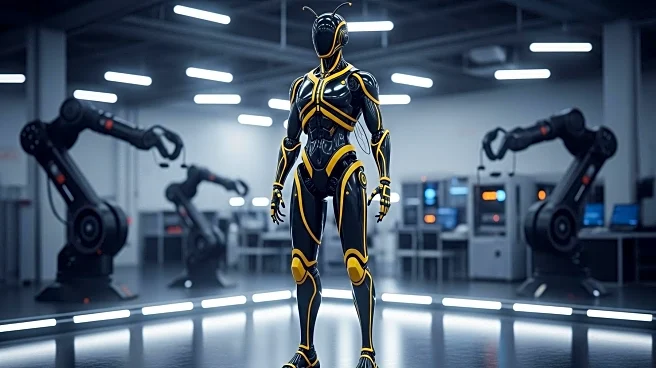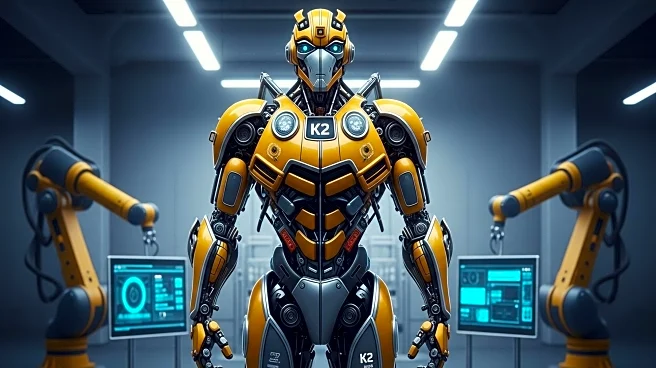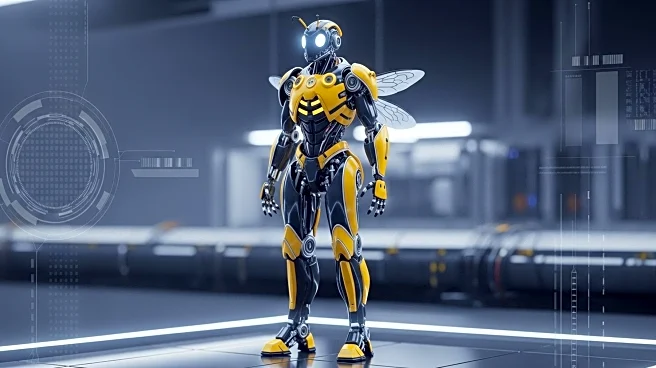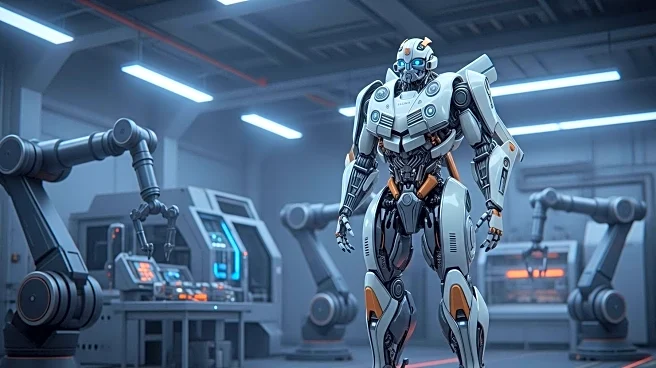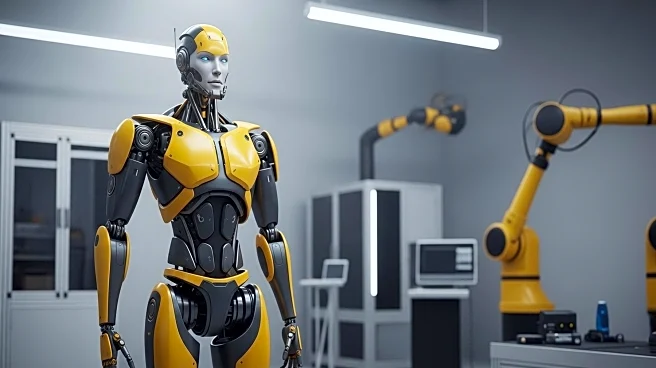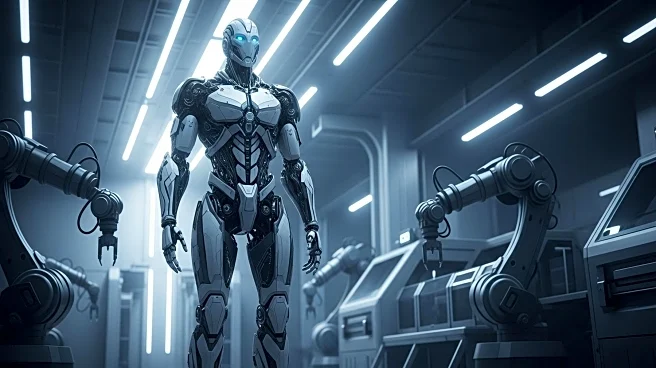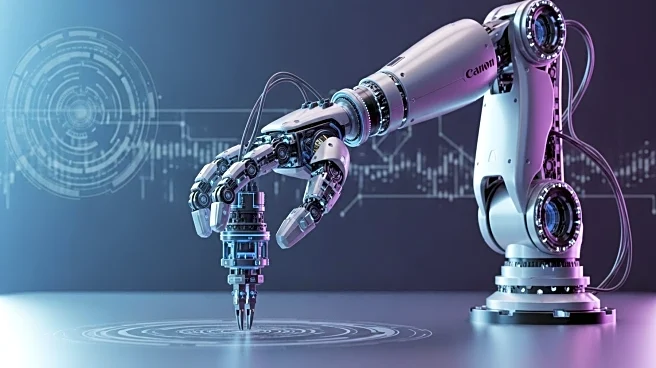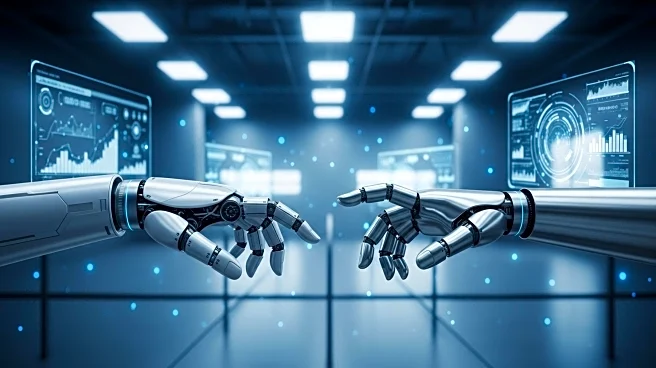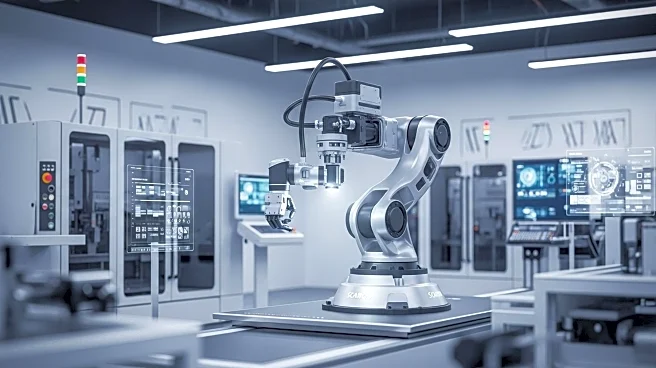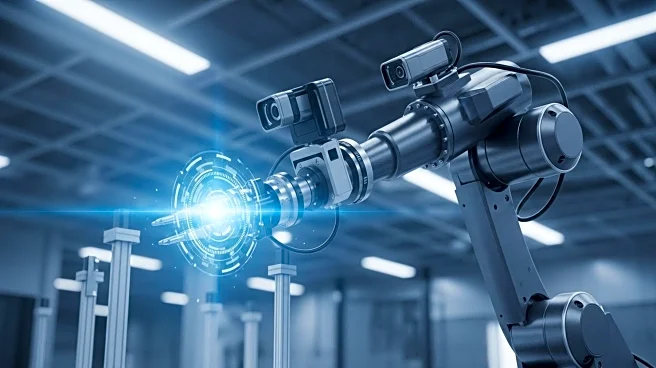What's Happening?
Kepler Robotics has initiated mass production of the K2 Bumblebee, the world's first commercially available humanoid robot powered by Tesla's hybrid architecture. This development marks a significant milestone in the robotics industry, as the K2 Bumblebee is designed to perform complex tasks with enhanced motor skills. The robot utilizes advanced vision-language-action models to translate visual information and instructions into motor commands, allowing it to complete tasks with greater transparency and efficiency. Upcoming robotics events such as IEEE Humanoids, World Robot Summit, and IROS 2025 will showcase further advancements in humanoid robotics.
Why It's Important?
The mass production of the K2 Bumblebee represents a pivotal moment in the robotics sector, potentially transforming industries reliant on automation and artificial intelligence. By integrating Tesla's hybrid architecture, the robot offers improved performance and versatility, which could lead to increased adoption in sectors such as manufacturing, healthcare, and logistics. This development may also stimulate competition among robotics companies, driving innovation and reducing costs for consumers. As humanoid robots become more prevalent, they could significantly impact labor markets and operational efficiencies across various industries.
What's Next?
Kepler Robotics' launch of the K2 Bumblebee is expected to influence upcoming robotics events, where further advancements in humanoid technology will be highlighted. The IEEE Humanoids event in Seoul, the World Robot Summit in Osaka, and IROS 2025 in Hangzhou will provide platforms for showcasing new capabilities and applications of humanoid robots. These events may also foster collaborations between companies and researchers, accelerating the development of more sophisticated robotic systems. As the industry evolves, stakeholders will likely focus on addressing ethical and safety concerns associated with humanoid robots.
Beyond the Headlines
The introduction of commercially available humanoid robots like the K2 Bumblebee raises important ethical and legal questions regarding their integration into society. Issues such as privacy, security, and the potential displacement of human workers must be carefully considered. Additionally, the development of humanoid robots challenges existing regulatory frameworks, necessitating new standards and guidelines to ensure safe and responsible use. As these robots become more capable, their role in society will need to be thoughtfully managed to balance technological advancement with social impact.

